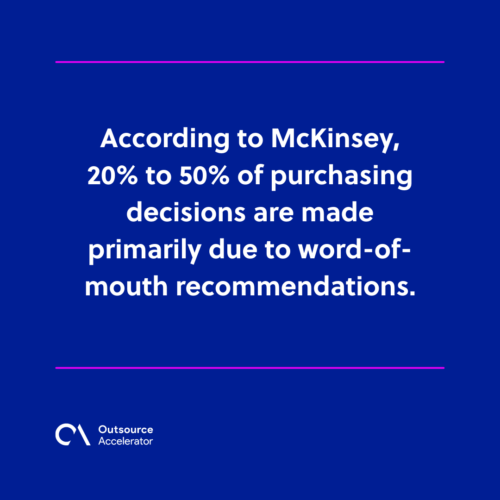12 lead generation techniques every marketer should know

One of a marketer’s most important tasks is generating leads for the organization. Without leads, you can’t expect to achieve your sales or marketing goals.
For that reason, lead generation is a necessary yet complex process. It requires thorough planning, strategizing, and experimentation.
Ruler Analytics revealed 91% of marketers agree that lead generation is their priority. That’s why we need effective lead generation strategies to entice and attract prospective customers.
So, let’s discover these 12 lead generation techniques that every marketer should know.
What is a lead?
Before we delve into the details of must-know lead generation techniques, let’s define a lead.
In marketing terms, a lead is a person or entity that has shown some level of interest in your product or service. Leads are identified after they provide their contact information or take some other form of action.
For example, if someone fills out a form on your website to download a document, that person will be considered a lead because of the interest shown in your content.
Similarly, if people attend one of your webinars and ask questions, they are a lead because they are showing interest in your topic.
A lead does not necessarily translate into a sale, but it is an indication that someone is potentially interested in what you have to offer.

Defining lead generation
Lead generation is the strategic process of identifying and attracting potential leads for your business. This approach aims to build a pipeline of prospects who can later be converted into customers or clients.
Lead generation often involves:
- Creating and distributing content
- Promoting products or services
- Building relationships with potential customers across various marketing channels
What are lead generation techniques?
Lead generation techniques are diverse methods marketers use to attract potential paying customers and convert them into sales-ready leads for the sales team.
These tactics form a structured lead generation process can vary from traditional methods to cutting-edge digital strategies, aiming to achieve the ultimate goal — increasing your customer base and revenue.
It is crucial to not only focus on acquiring new leads but also on nurturing relationships with existing customers to encourage repeat business and referrals.
Importance of using lead generation techniques
Effective lead generation is vital for the growth and sustainability of any business.
Utilizing lead generation is key in business to create a steady flow of potential customers in the sales funnel.
By harnessing the power of a lead generation campaign, you can build a steady stream of more leads more likely to convert into loyal customers.
A business cannot sustain growth and revenue goals without a steady influx of leads. Lead generation strategies also help enterprises build brand awareness, expand their customer base, and improve their bottom line.
They allow companies to target their ideal customers and personalize their marketing messages to increase engagement and conversions.
12 types of lead generation techniques
Here are the 12 lead generation techniques every marketer should know:
Traditional lead generation techniques
In a world dominated by digital marketing, traditional lead generation techniques still hold significant value. These time-tested methods have paved the way for many successful businesses.
1. Networking and referrals
Personal connections and word-of-mouth recommendations remain powerful tools. Networking and referrals connect you with people in your industry or niche, allowing you to leverage their contacts to generate leads.
This method can be done through:
- Attending networking events
- Joining industry associations
- Simply reaching out to current clients and asking for referrals
According to McKinsey, 20% to 50% of purchasing decisions are made primarily due to word-of-mouth recommendations.

2. Direct mail and cold calling
Although deemed old-fashioned, personalized direct mail and well-executed cold calling can help establish direct connections with potential clients.
Direct mail involves sending physical marketing materials to potential leads. While cold calling involves making unsolicited phone calls to potential prospects.
These strategies can be costly and time-consuming, but they can also be highly effective if done properly.
3. Print advertising and billboards
Strategic placement of print ads in target areas can create brand awareness and pique interest.
This tactic involves placing ads in newspapers, magazines, or billboards to reach potential customers. While this method can be expensive, it is effective for businesses targeting a local audience.
Moreover, print ads and billboards give companies greater control over their messaging and branding. They let brands create a lasting impression on potential leads.
4. Product or service trials
Offering free trials or samples allows potential customers to experience your offerings. This could increase the likelihood of conversion.
This technique is particularly effective for Software as a Service (SaaS) businesses that want to encourage potential customers to try their product before purchasing.
5. Trade shows and conferences
Participating in industry events lets you engage with a relevant audience and collect valuable leads. These events allow enterprises to showcase their products or services and build relationships.
The Tradeshow Network Marketing Group discovered that 90% of attendees represented new prospects with whom exhibitors had no prior relationship.
This makes trade shows and conferences an effective way to expand your network of potential leads.
Digital lead generation techniques
Digital lead generation techniques have become increasingly popular in recent years, thanks to the rise of the internet and social media.
In the digital realm, using effective techniques is vital for attracting qualified leads.
Through various lead generation tactics, such as content marketing, social media ads, SEO, and email campaigns, companies can target their ideal audience and drive customers to their products/services.
6. Content marketing
Creating valuable and relevant content establishes your brand as an authority in the industry. This helps attract organic traffic and generate leads.
Content marketing involves making and spreading content to attract and engage a target audience.
This technique can include blog posts, e-books, videos, infographics, and other types of content that provide value to potential customers.
7. SEO and PPC advertising
Search engine optimization (SEO) and pay-per-click (PPC) advertising are methods of using search engines to generate leads for your business.
SEO optimizes your website and content for search engines to improve rankings and attract traffic.
Meanwhile, PPC advertising places ads on search engines and pays for each click on your ad. This increased visibility not only drives more website visitors but also enhances the potential for online lead generation.
8. Social media marketing
Social media marketing involves using social media platforms like Facebook, Instagram, X, and LinkedIn to engage potential customers.
It involves creating and sharing content, running ads, and building relationships with followers.
Hootsuite reported that 87% of businesses worldwide believe social media is critical to staying competitive.
Social media also allows companies to target their ideal customers based on demographics, interests, and behaviors. This makes it easier to generate high-quality leads.
9. Interactive content and gamification
Engaging content like quizzes, polls, and games captivate users. This encourages potential leads to provide their information in exchange for entertainment.
This strategy is particularly effective for business-to-business (B2B) enterprises that want to educate potential customers and provide them with a personalized experience.
Interactive content allows organizations to give value to prospects while collecting valuable data for lead nurturing and segmentation.
Emerging lead generation techniques
Emerging lead generation techniques are the latest methods that are still in the early stages of adoption.
These tactics use new lead generation marketing strategies and methods to attract and engage potential prospects.
10. Account-based marketing
Account-based marketing (ABM) is a B2B lead generation method that targets high-value accounts. It creates personalized marketing campaigns tailored to their specific needs.
ABM involves identifying your ideal customers, creating relevant content, and delivering it directly to them through diverse channels.
11. Chatbot marketing and AI
Chatbot marketing and artificial intelligence (AI) are the latest innovations in lead generation.
Chatbots are AI-powered tools that engage in conversational marketing and provide customized solutions.
Moreover, AI can analyze customer data and provide insights to optimize lead generation campaigns.
12. Voice search optimization
Voice search optimization is a new frontier in lead generation that optimizes your digital content for voice-activated tools like Siri, Alexa, and Google Home.
This method involves using long-tail keywords, natural language, and structured data. These make it easier for voice-activated devices to understand and present your content.
Oberlo found voice search is becoming increasingly popular. It reports that 71% of consumers would rather convey queries by voice than typing.
Challenges and considerations of using lead generation techniques
While lead generation strategy offers immense potential, several challenges and considerations must be addressed to ensure success.
By carefully considering these challenges and utilizing the right tools, businesses can enhance their lead generation efforts and pave the way for sustainable growth.
Using lead generation tools can streamline the process, but it’s crucial to choose the right tools that align with your goals and target audience.
Alignment between sales and marketing teams
One of the biggest challenges of using lead generation strategy is ensuring proper alignment between sales and marketing teams.
Sales and marketing teams must work closely to:
- Define ideal customer personas
- Establish lead qualification criteria
- Develop lead nurturing strategies
Established alignment between these teams can improve lead quality, increase conversions, and reduce churn rates.
Identifying and qualifying leads
Another challenge is identifying and qualifying high-quality leads. Not all leads are created equal, so businesses must have a system to identify which leads are worth pursuing.
Lead qualification criteria can include factors such as:
- Budget
- Authority
- Need
- Timeline
- Fit
By establishing lead qualification criteria, businesses can ensure they are focusing their resources on the right leads.

Measuring and analyzing campaign performance
Measuring and analyzing campaign performance is essential for optimizing lead generation strategy and improving ROI.
Companies must track KPIs such as:
- Conversion rates
- Click-through rates
- Cost per lead
- Revenue generated
By evaluating campaign performance, firms can identify areas for improvement and make data-driven decisions.
Choosing the right platforms and channels
Choosing the right platforms and channels for lead generation can be difficult, especially with so many available options.
Organizations must choose platforms and channels that align with their target audience and marketing goals. You should also experiment with different platforms and channels to see which are most effective in generating leads.







 Independent
Independent




